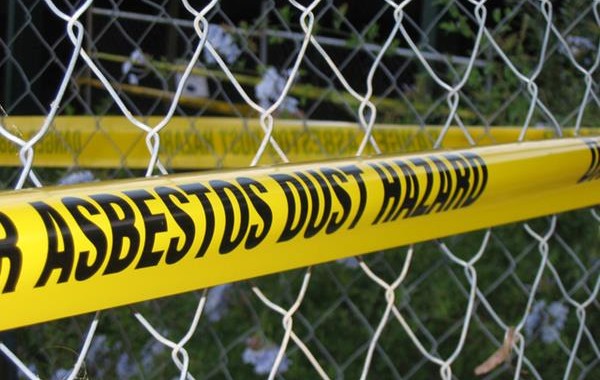Asbestos kills! According to the World Health Organization, about 125 million people in the world are currently exposed to asbestos at the workplace, and more than 107,000 deaths per year are attributable to occupational exposure to asbestos. This equates to roughly a 1 in 1000 chance of mortality from asbestos exposure for those 125 million people.
The death of more than 100,000 people, the many-fold higher number of people who are suffering from asbestos-related diseases, and the direct impacts on their family and friends means that millions of people per year are adversely and unnecessarily affected by exposure to this toxic substance.
Legislation and Regulatory Setting
This is most definitely not a newly discovered issue. The connection between asbestos and cancer was first noted by a German researcher in 1943. This was followed up by other studies from Canada, Germany, Australia, Ireland and Austria in the 1940s to 1950s. Since then, thousands of publications have conformed and expanded on these findings
There is legislation in place in many countries regarding the use of asbestos, starting in the early 1970s, e.g., the USEPA issued emission standards for asbestos as part of the Clean Air Act in 1972 and the US established occupation exposure limits in 1986 in OSHA Standard 29 CFR 1910.1001. As of September 2105, 57 nations have banned or restricted the use of asbestos, including all 28 countries of the European Union. Bahrain, Brunei, Israel, Japan, Jordan, South Korea, Kuwait, Oman, Qatar and Saudi Arabia are the only Asian countries on this list.
There is continuing wide-spread push to eliminate asbestos entirely. Notably, the American Public Health Association joined the call of at least three major international health organizations in asking for a global ban on asbestos use in 2010. The World Federation of Public Health Organizations, the International Commission on Occupational Health and the International Trade Union Confederation earlier recommended such a ban. Since 2005, the World Health Organization has urged its members to work toward eliminating mesothelioma and other cancers caused by avoidable exposures to carcinogens at work and in the environment. In 2007, the World Health Assembly asked WHO to launch a global campaign to eliminate asbestos-related disease, primarily by targeting countries that still use chrysotile asbestos.
What are the Health Effects Associated with Asbestos Exposure?
Asbestos is the name given to a group of naturally occurring minerals that are resistant to heat and corrosion. It is a known carcinogen, i.e., a cancer-causing compound, that causes malignant mesothelioma and lung cancer. It is also linked to many non-malignant diseases, e.g., asbestosis, which leads to long-term breathing complications.
Importantly from an occupational health perspective, diseases caused by asbestos are slow to develop. They have a latency of about 30-40 years, which means that people exposed to asbestos are not likely to experience the effects for several decades. This also means that the HSE professional on site is not likely to ever observe directly the impacts of exposure to asbestos on his colleagues. Out-of-site, out-of-mind? Hopefully not!
How and Where (and Why) is Asbestos Still Being Used?
Notwithstanding this strong push to globally eliminate this toxin from the workplace, asbestos remains an important component of the construction and manufacturing industries, particularly in developing countries. As noted by Sugio Furuya, coordinator of the Tokyo-based Asia Ban Asbestos Network (A-BAN) – “Asia and the Middle East consume the asbestos that is not used elsewhere any more. Other colleagues at A-BAN noted that the worries are China, India and Russia, which account for 60 percent of world asbestos consumption and have very little regulation over its use. Kazakhstan, Indonesia, Uzbekistan and Sri Lanka are also consuming significant amounts without a tight legal framework.”
Asbestos production and use continued to grow from the early 1990s through to the peak world demand in 1977 of some 4 million tonnes per year. While the global demand sharply decreased from the 1970s to the 1990s as a result of increased legislation, the demand in Asia increased during the same period and remains high to date:
Why is it still being used, when we are all aware of the serious effects on human health? It is of course financial. Its wide use is due to its strength, flexibility, low electrical conductivity, and resistance to heat and chemicals. Dozens of products may still legally contain asbestos in certain amounts – see UK’s HSE website for details. These products are mostly used in the building and construction industry, and may exist in new structures. A partial list of these products includes:
- vinyl sheet flooring
- vinyl and asphalt floor tiles
- flooring backing
- roofing shingles
- cement wallboard
- acoustical and decorative plaster
- boiler and electrical wiring insulation
- electrical panel partitions
- caulking, spackling, adhesives
- chalkboards
- cement siding and pipes
- heating and electrical ducts
- fire blankets
- fire doors
- high temperature gaskets
- elevator brake shoes and elevator equipment panels
- ceiling tiles
- electrical cloth
- thermal paper products
In addition, asbestos is found in almost all buildings constructed prior to 1980.
According to the U.S. Agency for Toxic Substances and Disease Registry (ATSDR) and the U.S. Occupational Safety and Health Administration (OSHA), asbestos exposure is a concern for the following workplaces and processes:
- mining of asbestos occurring from natural mineral deposits
- processing of asbestos minerals (millers)
- manufacture of asbestos-containing products
- construction industry – disturbing asbestos-containing materials during building renovations or demolitions
- mechanics – vehicle brake and clutch repairs
- marinas – renovating or demolishing ships constructed with asbestos-containing materials
- insulation workers and heating trades
- sheet metal workers, plumbers and pipe fitters
- workers responsible for disposing of asbestos waste, and waste workers
- cement workers
- custodial workers – contact with deteriorating asbestos-containing materials in buildings
How to Minimize Exposure to Workers?
First, let’s start by recognizing that since asbestos is a carcinogen, there is no safe level of exposure. As noted by OSHA: “Asbestos exposures as short in duration as a few days have caused mesothelioma in humans. Every occupational exposure to asbestos can cause injury of disease; every occupational exposure to asbestos contributes to the risk of getting an asbestos related disease.”
The exposure pathway is limited to breathing asbestos fibres. This means that any measure to reduce or eliminate that exposure pathway are helpful.
Of course, the first step in an asbestos exposure program is to recognize that the most efficient way to eliminate asbestos-related diseases is to stop the use of all types of asbestos and to replace asbestos with safer substitutes. This is of course not always possible in the real world. and particularly in Asia. In fact, my advice to my clients is to assume that you have asbestos somewhere in your facility, especially if that facility is more than 10 to 20 years old. Then, do what you can to prevent exposure.
There are many good resources on line to help, e.g., Canadian Centre for Occupational Health and Safety. The Mesothelioma Center also provides sound advise for controlling exposure:
- Complete regular assessments of asbestos risks and identify areas of concern
- Perform air monitoring and keep records
- Communicate asbestos hazards to workers
- Use proper work practices and controls to limit exposures
- Offer respiratory protection if exposure limits are exceeded
- Provide asbestos awareness training
- Provide medical surveillance to workers exposed to asbestos
For those who are responsible for HSE in businesses with occupations where asbestos exposure is a particular concern, ensure the workers are aware of the following steps to prevent exposure and illness:
- Never cut, saw, drill, sand, scrape or otherwise disturb asbestos-containing materials
- Always wear proper protective gear when your work may disturb asbestos
- Always wear proper protective gear when your work may disturb asbestos
- Don’t bring home work clothes or shoes that may have been contaminated with asbestos
- Don’t sweep, dust or vacuum asbestos debris
- Always dispose of asbestos materials according to local regulations
Note that most of these protective measures can be implemented at minimal cost to your business and will provide long-term benefits to the workforce. It is up to you to be informed, to inform your managers and workers of the dangers of this toxic substance and to do what you can to keep everyone safe and healthy. Do not ignore this issue – the life you save may well be your own!
Thanks for reading. Keep safe. Be healthy. Respect your environment.
I hope that you will bookmark the blog, share it with your colleagues and visit the blog frequently because you find it informative and helpful. I value your feedback and suggestions for future topics.
Please enter your email in the box at the top of the post and subscribe to our blog HSE Asia – our weekly blog will be emailed directly to you.
Next Week’s Blog Topic: Asia’s Arsenic Poisoning Crisis – What You Need to Know and What You Can Do About It
Photo Credits: Asbestos dust image courtesy of Stephen Simpson of www.freeimages.com
- Is Your Business Compliant with HSE Regulations? Take Our Quiz to Find Out! - September 16, 2024
- Duty of Care: What it Is and What it Means to Companies Operating in the GCC? - January 28, 2024
- Free E-Book:Health, Safety, and Environment Regulatory Review – United Arab Emirates: An Overview of Federal Requirements - July 5, 2023


Hi Randall,
We manage an international volunteer program from Australia. We currently do an accommodation and work place assessment, but it only has an ‘is asbestos present’ question. Do you have a risk matrix that would help us to consider the asbestos issue and its management?
Dear Brett, That is a great question. Depending upon your jurisdiction, an asbestos survey may require a person with special training and accreditation to carry it (and of course regardless some level of training/experience is needed to do an effective job). That being said, there are some decent resources available – this one is from UK’s HSE – Asbestos – The Survey Guide. This is an important health issue so best of luck and thanks for the question.